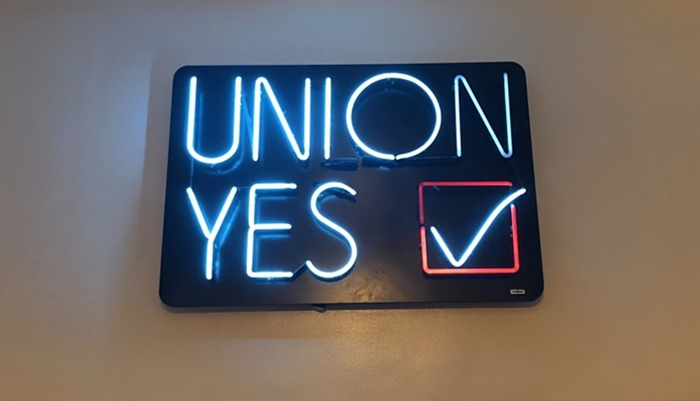The ban eliminates the right to a certain procedure in the third trimester of pregnancy. Opponents of this rare procedure--a 2000 survey determined that it represents fewer than one-fifth of one percent of abortions--have concentrated on the disturbing details, which include a partial delivery, and then collapsing the fetus' skull, hence the inaccurate, and wildly propagandistic, name. (The doctors who perform the procedure call it an intact dilation and extraction--D & E.)
The rhetoric employed by abortion foes, in typical right-wing style, is nightmare scenario stuff: A teenager decides she'd rather fit into her prom dress than have the child she's carried almost to term, as if it were that easy to obtain an abortion after the seventh month of pregnancy, as if the procedure were commonly used in cases outside of those when the mother's health is seriously at stake, or when the health of the fetus is already seriously compromised. The rhetoric (and now the ban) sidesteps the reality that it's impossible to test for certain serious birth defects until late in the pregnancy and gives righteous opponents the chance to claim, as one letter writer in upstate New York did, that there is nothing more inspiring than a mother caring for her handicapped child.
The ban was blocked, soon after the law was signed, by a federal judge in Manhattan based on a challenge by a network of abortion providers claiming that the law was unconstitutional, since it lacked a provision taking the health of the mother into account. In 2000, the Supreme Court declared a similar statute unconstitutional for the same reasons. As of this writing, the block remains in place, and this procedure--this rare procedure--continues to be performed.
---
An intact D & E is a drastic procedure, to be sure. It is certainly not one that a woman would undertake lightly--the prom-dress scenario, like the putative welfare queens of the '80s, is a fiction invented to shock.
So why doesn't anyone seem to care? The major pro-choice element in this most current abortion-rights battle is as it ever was: NOW and NARAL are planning a march on Washington in April. But abortion has disappeared from the horizon of everyday political discussion, lost among the war in Iraq and the economy and obesity as a legal issue and the global AIDS epidemic. Abortion is a subject that non-right-wing politicians don't bring up--it's too much of a flash point, too easy to lose moderate voters--but more to the point, it doesn't seem to exercise any hold over the minds of women anymore. There have been, so far, no protests in Seattle (a city where people will march at the drop of a hat!), no public awareness campaigns, nary a voice raised in objection.
Why is this? Partly because the intact D&E strikes even pro-choice voters as outra- geous and cruel, however dire the circumstances. A number of Democratic politicians seemed to agree--62 of 205 Democratic representatives in the House voted for the ban, as did 17 of 48 Democrats in the Senate: not a majority, but a significant number. But banning this procedure does not only affect women with dangerous late-term pregnancies; the new legislation abolishes the procdure in second-trimester pregnancies as well. The margin of the allowable has slimmed. And here is perhaps the biggest victory for the pro-life faction: They've done it so cunningly we haven't even noticed.
And where are the young women rising up in protest? Why have women failed to rally around abortion rights the way gays have made themselves a presence to be felt in AIDS prevention? The answers have as much to do with apathy--with our lazy belief that we live in a progressive country, moving always toward a better, more just society, and that our rights may come under assault but they will never be taken from us--as with being beaten down by years of conservative browbeating and the dawning awareness that one person/one vote means nothing of the kind. After all, the antiwar protests didn't stall the rush to war in Iraq by a single minute. The most lasting legacy of the struggle to retain a woman's right to decide whether she lives or dies over the birth of a child is a kind of helpless, internalized fury.
This was not the case in 1989, when the Supreme Court heard arguments in Webster v. Reproductive Health Services, which determined a state's right to make abortion policy. The editorializing was incessant; you could hardly walk to the corner without getting into an argument about the class issues of abortion rights. I drove to Washington, D.C., to protest, along with about a half-million other people. My mother was talking about it.
To ask what happened to pro-choice fervor in the last 15 years is to ask what happened to feminism. In Ellen Goodman's op-ed piece about the ban ("An abortion law that makes women invisible," Seattle Times, Nov. 14), she remarks on the picture of Bush signing the ban into law, surrounded by a lot of jowly old men. "This should be a wake-up call to young women," she writes, noting that "the most reliable supporters of abortion rights today are women over 50. It is, ironically, post-menopausal women who still lead the struggle to keep abortion legal for younger women."
Goodman's complaint has the air of a parent who has worked hard to ensure that her child will have a better life, but wouldn't mind if the child suffered a little in service of recognizing it. It was this kind of scolding that turned me off NOW and NARAL, along with the tendency--apparent on NARAL's website, where testimonies are favored over hard facts--to lean on touchy-feely empowerment strategies rather than the real dynamics of political power.
Still, you don't have to call yourself a feminist to worry about what eliminating abortion rights means to women. George W. Bush has made no secret of his plan to limit access to abortion by degrees, and even the "partial-birth" ban is meant as a kind of feint, to distract you from the real issue, which is who gets to--as Goodman says--have a voice in moral decisions.
The anti-abortion faction, as it turns out, has learned a great deal about subtlety while we were scrapping over what it does and doesn't mean to be a feminist. Maybe you've seen the soft-focus television spot, lit by the red, flashing lights of a fire engine, in which a female firefighter hands a child over to his relieved-looking parents, and then shakes out her blond hair and delivers a brief homily on the choice her mother made not to have an abortion. By saving her life, the fictional firefighter tells us, her mother saved a whole string of lives.
This spot tends to run toward midnight, during David Letterman or Saturday Night Live, and often when I encounter it I'm idling or procrastinating, or in the first prickling stages of insomnia. I mute the television by reflex, and almost always give a cursory thought to the choice of time slot. Who's watching TV at this hour? Who's watching these particular programs? Night people, devoted ironists, people who haven't dropped from exhaustion from running around with two or three kids. There is what seems to be a deliberate disconnect in the spot's placement. Who are the people who bought airtime for this spot trying to reach? Not churchgoers, clearly, but young urbanites. Women like me.
This commercial is as manipulative as any bit of political rhetoric: the language, which makes use of the abortion-rights rhetoric of choice (here, notched slightly toward the more morally firm with "decision"); the feminine subject who is also portrayed as tough, as doing a job mostly done by men (hardly a passive stay-at-home mom); the invocation to "think about it," which suggests that having an abortion is as thoughtless as stepping on a bug.
You might see this spot as something positive, an attempt to persuade rather than legislate change; thinking hard about abortion is, after all, the fallback position of the pro-choice side, the claim that abortion is an agonizing choice rather than a blithe one. But this pushy commercial--as far removed as it is from the last generation of pro-life ads, the baby about to be born, the baby who would like to be--conceals something much more powerful, a narrow-minded ethical sliding scale that dares us to be relativist. It is exactly the kind of danger that the newly subtle pro-life movement presents--we should be awake to it, rather than helplessly inactive. Instead of a march on Washington, pro-choice advocates should be producing and broadcasting commercials that counter the rhetoric and emotions the anti-choice activists are slyly injecting into the culture. (As it happens, NARAL has produced a television spot, a rather toothless invocation--illustrated by a woman walking backward--to protect your right to choose before it's too late. I can only hope that the reason I've never, ever seen this ad is because it's on during televised church services.)
When I mute this commercial, it's that helplessness taking over, and it's enraging. What the hell happened to me? Because all we can do is still as distressingly mundane as it ever was, and still as necessary: vote. Press candidates to take a stand on abortion issues, and get the real pro-choice candidates elected to office. Donate time and money. And take a good look at the opposition: Their strategies work.


















